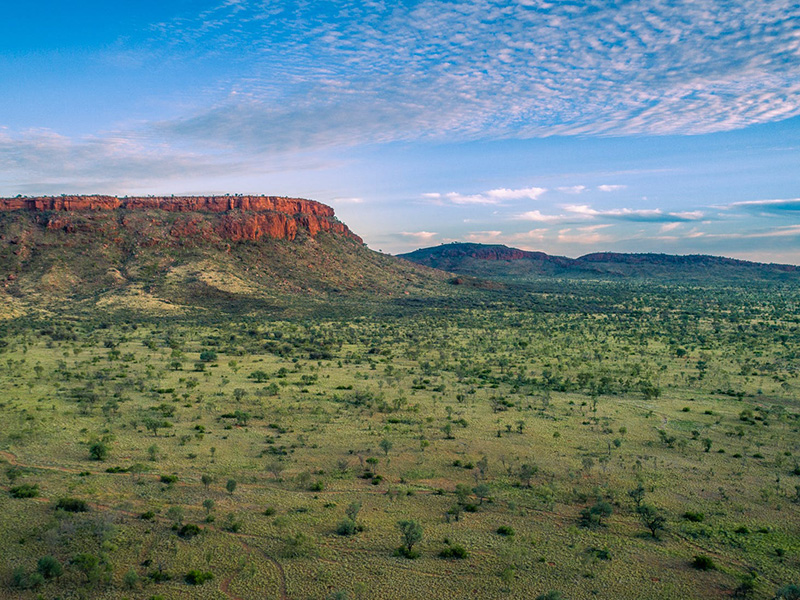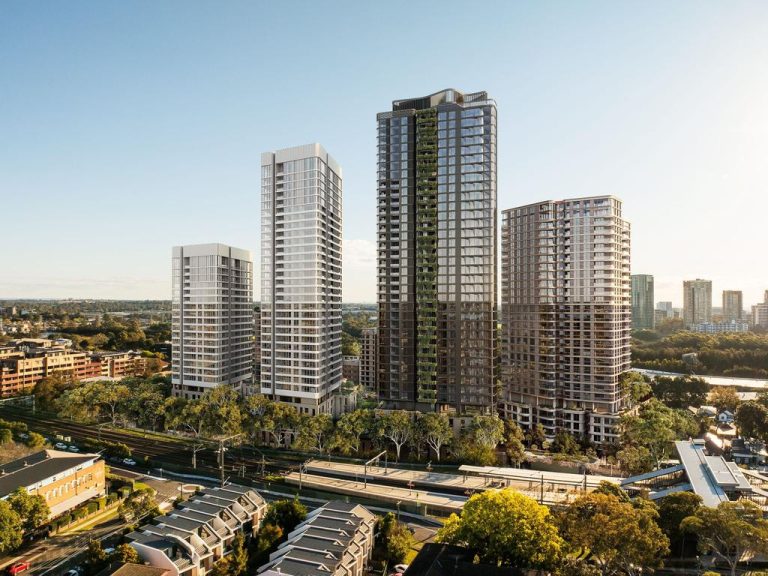‘Beautiful time’ to sell as Mount Doreen cattle station snapped up

The Oldfield and Costello families have grown their vast outback property portfolio with the purchase of Mount Doreen, one of the largest cattle stations in central Australia.
The property has sold through Colliers Agribusiness for $34.7 million, according to documents from the NT Land Titles Office, following an expressions of interest campaign.
It was unclear if Mount Doreen‘s 18,000 head of cattle were included in the sale.
The Oldfield and Costello families’ joint venture Crown Point Pastoral already owns a number of properties in the Northern Territory, South Australia and Western Australia. The company was widely reported to have become the nation’s largest private landholder earlier this year after purchasing Innamincka and Macumba stations from Gina Rinehart.
The 733,700-hectare Mount Doreen, around three times the size of the Australian Capital Territory, resides around 380km northwest of Alice Springs in the vast Tanami Desert. It’s a breathtaking property of mostly open country interspersed with spectacular ranges that provide water run-off for creek systems and water points.
The property’s infrastructure comprises a renovated homestead, formed roadways, airstrip, 16 equipped bores and yards, and a suite of plant and equipment.

Mount Doreen occupies a significant stretch of the Tanami Road, which links central Australia with the Kimberley. Picture: realestate.com.au/sold
It can sustainably carry 22,000 to 23,000 head of cattle long term. Average rainfall is 350mm to 380mm per year, with CBRE estimating rainfall reliability in that part of the Territory at 39%.
When it was established in 1932 by drovers William and Doreen Braitling the land was, in farming terms, considered inhospitable and it wasn’t thought suitable for a large cattle station.
But the Braitlings made a success of the station and it remained in the family, with William and Doreen’s grandson Matthew Braitling now looking to retire.
Mount Doreen is one of several large cattle farms to have hit the market this year.

A proven breeding property with irrigated farming in Central Australia, Neutral Junction has been in operation for more than 100 years. Picture: realestate.com.au/sold
Neutral Junction , a breeding property on 460,900 hectares located south of Tennant Creek, sold earlier this month via Nutrien Harcourts to the Pickersgill family’s Bunderra Cattle Co for a reported $30 million.
Meanwhile the Walhallow Aggregation, comprising the Walhallow and Cresswell Downs cattle stations in the northeast part of the Territory spanning 1,003,400 hectares, is currently under offer with Colliers Agribusiness following an expression of interest campaign.
‘Great time to be in farming’
David Goodfellow, managing director of CBRE Agribusiness, said it’s a fantastic time for both cattle station vendors and buyers.
“We’re seeing smiles on both sides of negotiations at the moment,” he said.
“With good prices for cattle, we’re seeing very strong demand for good quality cattle properties and in particular those properties that come with their cattle.”
“And for those families that are not committed to staying in agriculture for another generation, now is a beautiful time for them to be selling.”
Mr Goodfellow said he expects Australia to enjoy high cattle prices for “at least the next two or three years” thanks to domestic demand as producers continue to rebuild herds post-drought, coupled with a global market hungry for meat-based protein.
“Before the drought, we had about 29 million head of cattle in Australia. It got down to as low as 24 million. We’re now only back up to about 26 million,” he said.

As Australian breeders continue to restock their cattle herds after the drought, prices are expected to remain high. Picture: realestate.com.au/sold
Strong demand for cattle stations is coming from both institutional investors, particularly overseas funds, as well as high net worth individuals and families returning to the industry, he added.
“There was a bit of an absence of people coming back into the industry through the nineties and early 2000s, but now the seasons are with us, the commodity markets are with us, it’s a great time to be in farming,” he said.
Outlook ‘very good’ despite rising interest rates
Livestock remains Australia’s largest agricultural sector, accounting for 42% of total production in 2020-2021, according to government report Snapshot of Australian Agriculture 2022.
The report said while higher prices have been the main growth driver, “temporary factors such as drought in the United States and disease outbreaks such as African Swine Fever in meat importing countries” were also playing a part.
Mr Goodfellow said Australia is still regarded as the only country in the world that’s never had an export restricting disease.
“That really validates all the effort we go to protect our borders,” he said. “It’s something we should be really proud of.”
He added that recent increases in interest rates would be unlikely to deter families and corporates wanting to expand in the livestock industry.
“If inflation lines up with rising interest rates, it also lines up with rising commodity prices. And because across Australia there’s typically a very low level of debt in agriculture, interest rates can go up a fair bit.
“The outlook for the beef industry and commodities in general is very good.”







